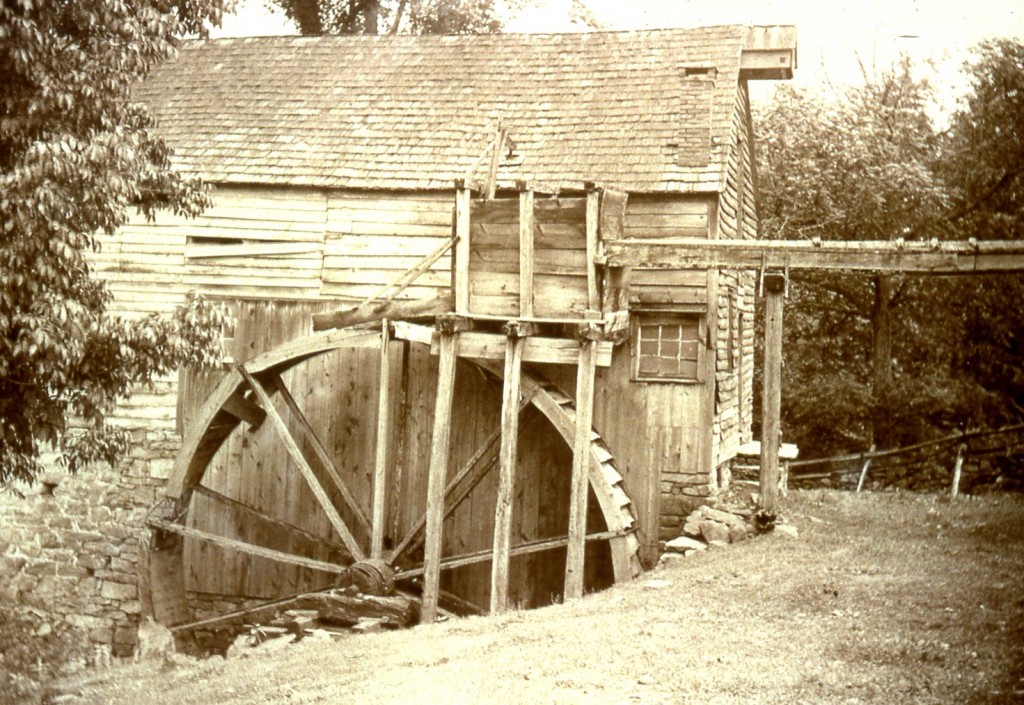By which I mean mill wheels.
There is a fascinating article on water-powered mills to be found on “History–Now and Then” giving detailed information on how the ancient grist mills worked. The author, known as “Jerseyman,” explains how overshot wheels were designed and how much more efficient they were than undershot wheels. Immediately I thought of a locally famous overshot wheel at the old Sergeant’s mill near the Wickecheoke. Here’s a picture that says it all–the perfect example of an overshot wheel.

Jerseyman writes: “By damming a stream and forming a millpond, the water was directed to the waterwheel through a headrace and/or a penstock-a wooden trough or iron pipe that channeled the flowing water to strike the wheel.” That is exactly what was done for the Sergeant’s Mill. A long long penstock was built to carry water from a tributary of the Wickecheoke known as Cold Run, I think. It amazes me how long it was–perhaps 100 feet, but I suppose they needed the length to deliver the right amount of force to the wheel.
Obviously, the photo above was taken when the mill had passed its heyday. The mill was an important feature of 19th-century life in Delaware Township. This early 20th century photo shows that its day had passed. The history of Sergeant’s mill is definitely on my list of articles to publish here, but it is waiting in line for its turn.
In the meantime, be sure to read the rest of the “Here and Now” article, appropriately titled “Grist for the Mill: An Operational Guide.”

Jerseyman
May 13, 2011 @ 11:28 am
Marfy:
Thank you so much for your kind reference to my blog; your attention to my offerings is sincerely appreciated! I hope to post several new articles later this month (May) and also in June.
Best regards,
Jerseyman
Carolyn Portier Gorman
July 27, 2018 @ 12:24 pm
I’d like permission to use the image of the Green Sergeant’s Mill for publication in a local family history of the Kilpatricks in Tennessee.
Marfy Goodspeed
July 27, 2018 @ 12:57 pm
Yes, you may use the illustration, but please include attribution.